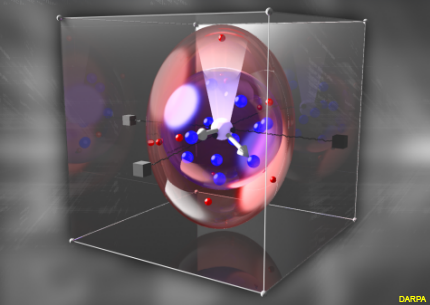That would be an upgrade: DARPA wants software that lasts 100 years
The agency's BRASS program aims to build adaptive systems and that respond automatically to changes in resources or its environment.

An artist’s concept of software components dynamically adapting to resource changes.
In a world where software upgrades are constant and obsolescence practically arrives out of the box, the idea of nearly permanent software might seem strange, but that’s what the Defense Advanced Research Projects Agency is aiming for with a new program to build software that can adapt and survive for more than 100 years.
The Building Resource Adaptive Software Systems, or BRASS, program looks to take a new approach to how software is developed, aiming for programs that can dynamically adjust to the resources they use and the environment they operate in. If nothing else, DARPA expects the program to produce “significant improvements in software resilience, reliability and maintainability,” the agency said.
In a Broad Agency Announcement, DARPA notes that software has extremely short and unpredictable shelf life compared with other engineering tools, leading to time-consuming, costly and frustrating upgrades, particularly as software becomes more complex.
“Technology inevitably evolves, but very often corresponding changes in libraries, data formats, protocols, input characteristics and models of components in a software ecosystem undermine the behavior of applications,” said Suresh Jagannathan, DARPA program manager. “The inability to seamlessly adapt to new operating conditions undermines productivity, hampers the development of cyber-secure infrastructure and raises the long-term risk that access to important digital content will be lost as the software that generates and interprets content becomes outdated.”
With BRASS, researchers want to get away from the current model of applications executing on software stacks with a lot of different layers of abstraction to what DARPA calls a clean-slate approach to software design that allows new specifications to be accepted automatically and algorithms that enable applications to adapt to changes without manual intervention from a programmer.
According to the solicitation, work on the program will be split into the "discovery" side, covering the part of the system responsible for identifying application intent, and the “analytics" side, which would monitor changes to the ecosystem and respond by transforming application.
The agency acknowledges getting to adaptive software will require research breakthroughs in several key areas. Jagannathan called building applications that can respond to a changing environment a “formidable challenge,” but said the alternative is “technically inferior and potentially vulnerable systems.” Without automated upgrade mechanisms, he said, software will remain stuck in its costly cycle of high maintenance and early obsolescence.
DARPA is known for undertaking high-risk/high-reward projects (something the agency is even willing to make fun of) that have in the past turned out to bear fruit. Adaptive, 100-year software would be quite an accomplishment, considering how transient software can be and how much technology can change in 100 years. (In 1915, for example, Alexander Graham Bell placed the first transcontinental phone call from New York to San Francisco, Thomas Edison invented the telescribe to record phone conversations and Georges Claude patented the neon tube for advertising.)
Responses to DARPA’s solicitation are due May 22 and the agency expects to award multiple grants for work on the project.
NEXT STORY: Army to create a marketplace for Manpack Radios